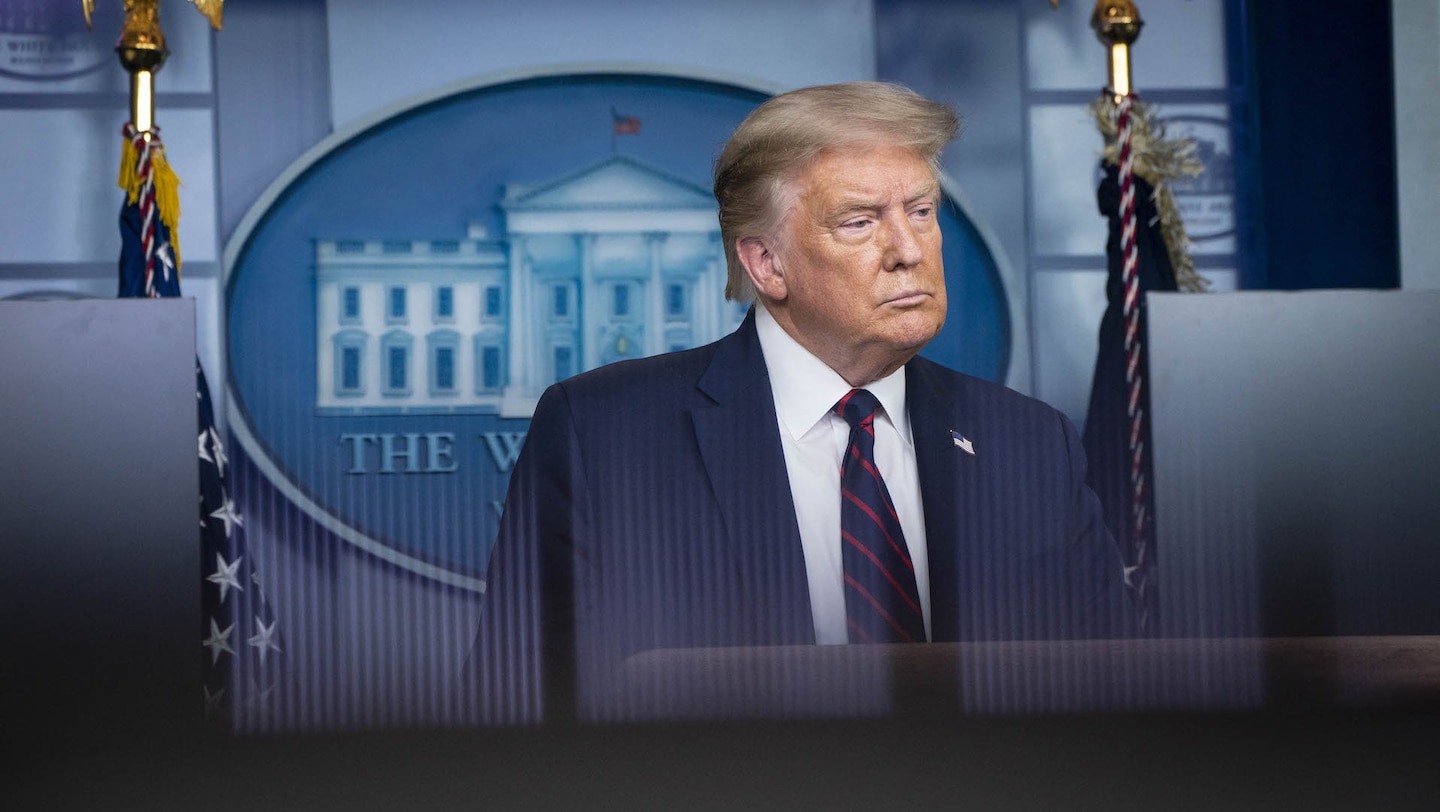5 takeaways from Trump’s return to the coronavirus briefing stage

We didn’t see that version of Trump at Tuesday’s briefing, but there was plenty of evidence that these briefings are geared toward shoring up Americans’ widespread disapproval of his handling of the pandemic. Here are five takeaways from the return of the briefing.
1. It’s the Trump show
Republican strategists and some of Trump’s allies have said that the best use of these briefings would be to have public health experts clearly convey to Americans what the status of the virus is, what the status of vaccine research is and how Americans can keep themselves safe in the meantime.
But rather than put recognized public health officials like Deborah Birx and Anthony S. Fauci center stage, Trump took it. In fact, he was the only one onstage. (When asked, Trump said Birx was standing “right outside.”)
In an interview with CNN’s Jake Tapper on Tuesday just an hour before the briefing, Fauci said he wasn’t invited.
Earlier in the day, White House press secretary Kayleigh McEnany argued that Trump is the best person to convey information about the virus because he’s the president. “He was elected by the American people,” she said. “He’s a leader on this.”
But the data show Americans think otherwise. Trump’s approval on how he’s handled the coronavirus has fallen 28 points since March, according to Washington Post-ABC News polling. Now, 60 percent disapprove of the job he’s doing. And he remains one of the least-trusted public figures on coronavirus.
But Trump has calculated that he needs to be back in front of the cameras to have a chance at reelection, and he’s formulated these briefings in a way that puts him at the forefront.
2. Trump expressed a new level of seriousness about the virus, but he still downplayed it
Trump struck a more concerned tone about the virus — at least by the standards of his previous run of briefings. “It will probably, unfortunately, get worse before it gets better,” he said. He encouraged people to wear masks, stay apart when possible and to “avoid packed bars.” He said he carries a mask with him and puts it on if he’s in an elevator.
But he also fell back on political attacks and misleading or false statements to downplay the virus and cast blame away from him. He called the virus “the China virus” and repeated his false claim that the United States has one of the lowest mortality rates in the world. He said again that the virus “will disappear,” for which there is no scientific evidence, even if there is a vaccine.
Under questioning from reporters at the briefing about that stance, Trump backed down slightly on blocking testing funds: “I think that we are doing tremendous amount of testing,” he said. “If the doctors and the professionals feel that even though we’re at a level that nobody ever dreamed possible, that they would like to do more, I’m okay with it.”
3. Trump did not offer any clear updates about the virus or a vaccine
This week, a major vaccine candidate reported promising results and could soon move to greater testing. At the briefing, Trump offered vague predictions about what that means for Americans: “Nobody’s going to maybe ever fully understand, but we’ll end up with a cure,” he said. “We’ll end up with therapeutics, will end up with a vaccine very soon or three.”
But the president is not a vaccine or public health expert. (Nor is he expected to be.) So his predictions carry less weight than had they come from someone who is steeped in the science, especially given how much Trump has questioned, contradicted and even derided experts like Fauci.
Fauci told CNN on Tuesday that the latest vaccine developments underscore what he has been repeating for months: That he’s cautiously optimistic there could be a vaccine candidate by late this year or early 2021.
(Then it’s a question of ramping up production globally — not an easy task.)
4. Trump does not have a response to his administration’s failures on containing the virus
Trump’s primary defense Tuesday about the virus ravaging the South and Southwest is to deny reality: “I think we’ve really started it up very successfully,” he said of America reopening.
Contrast that with detailed reports this weekend in The Washington Post and New York Times that show Trump and his administration missed signs about the virus spreading as he pushed states to reopen before they were ready. As a result, the United States is one of the only industrialized countries to still be facing such high infection rates.
The rest of Trump’s defense about his handling of the virus is the same as it was five months ago, when Americans first realized the virus was here: That he shut down travel from China and Europe (the latter of which backfired in its containment strategy and came too late anyway), and that he tried to ramp up personal protective equipment for health-care providers (which is now again in short supply in some hard-hit states).
All of that hasn’t worked so far to improve how Americans view his response.
5. Expect a lot more briefings
“We’ll be doing these quite often,” Trump said on his way out the door of a very short briefing for him. In the spring, they stretched some two hours. This one lasted around 30 minutes.
There’s a chance these briefings give Trump a political boost, if he’s able to stay on script and avoid any major controversy. Keeping them short is one way to ensure that.






